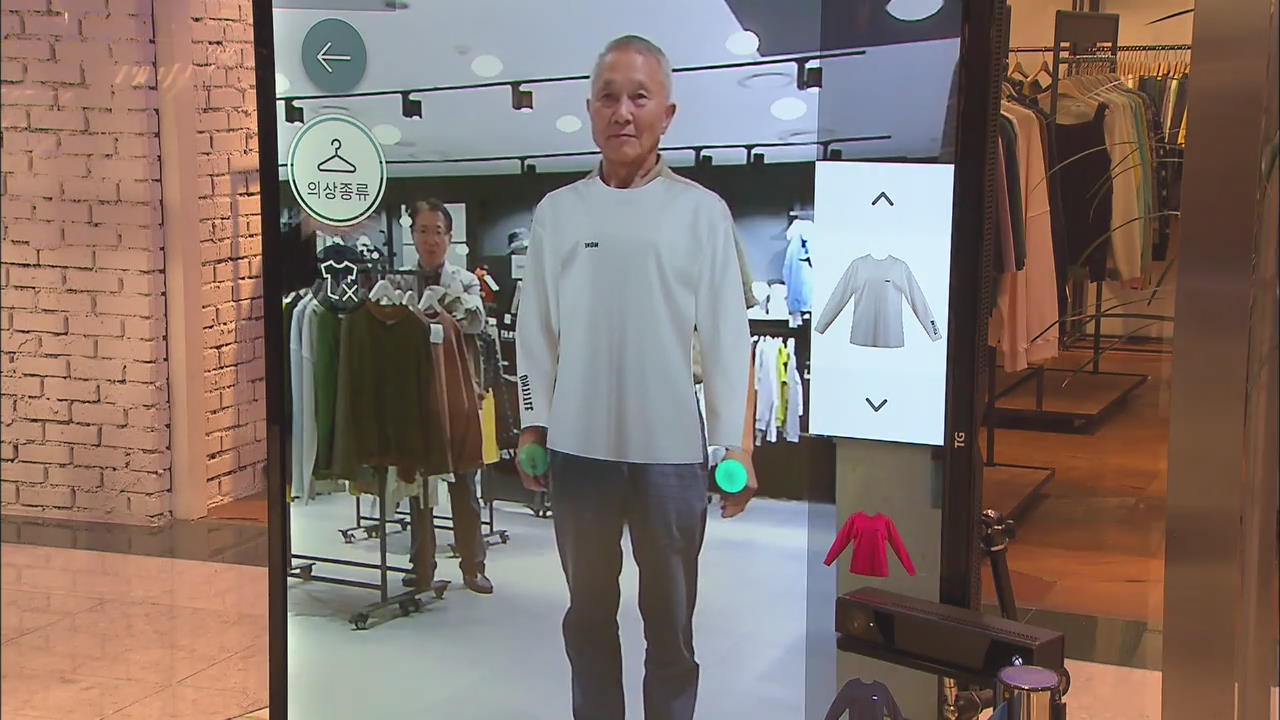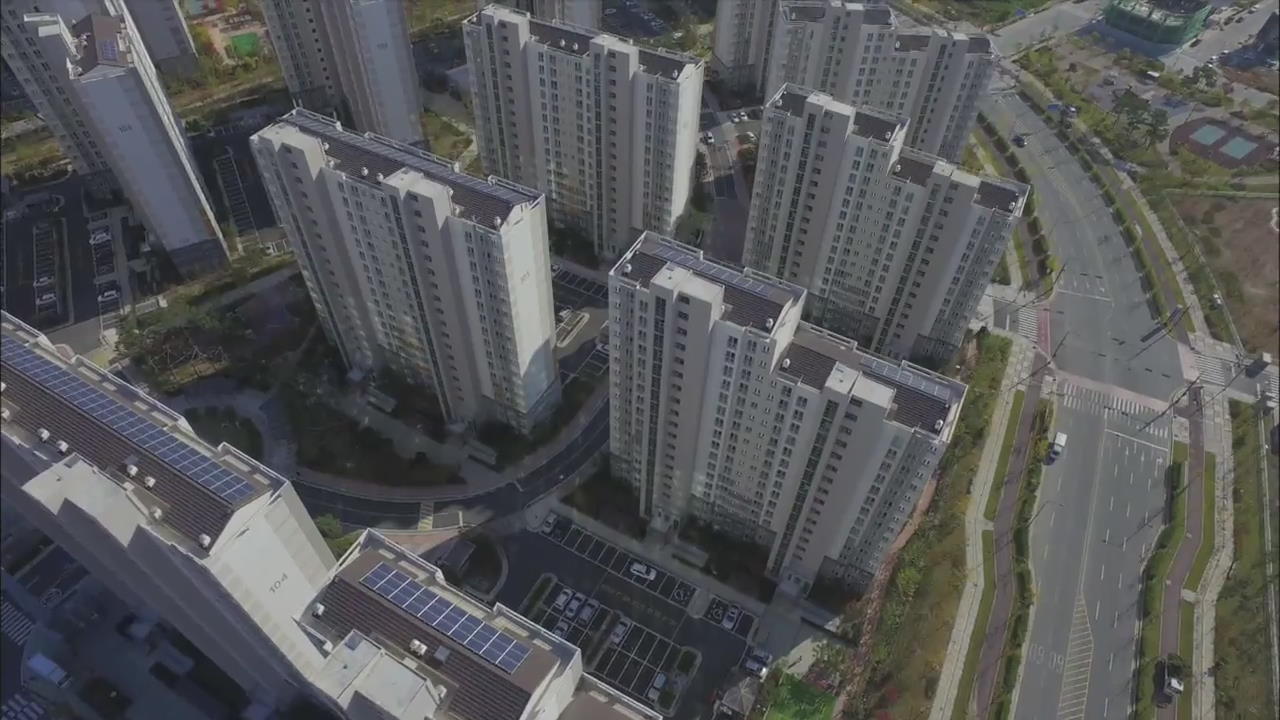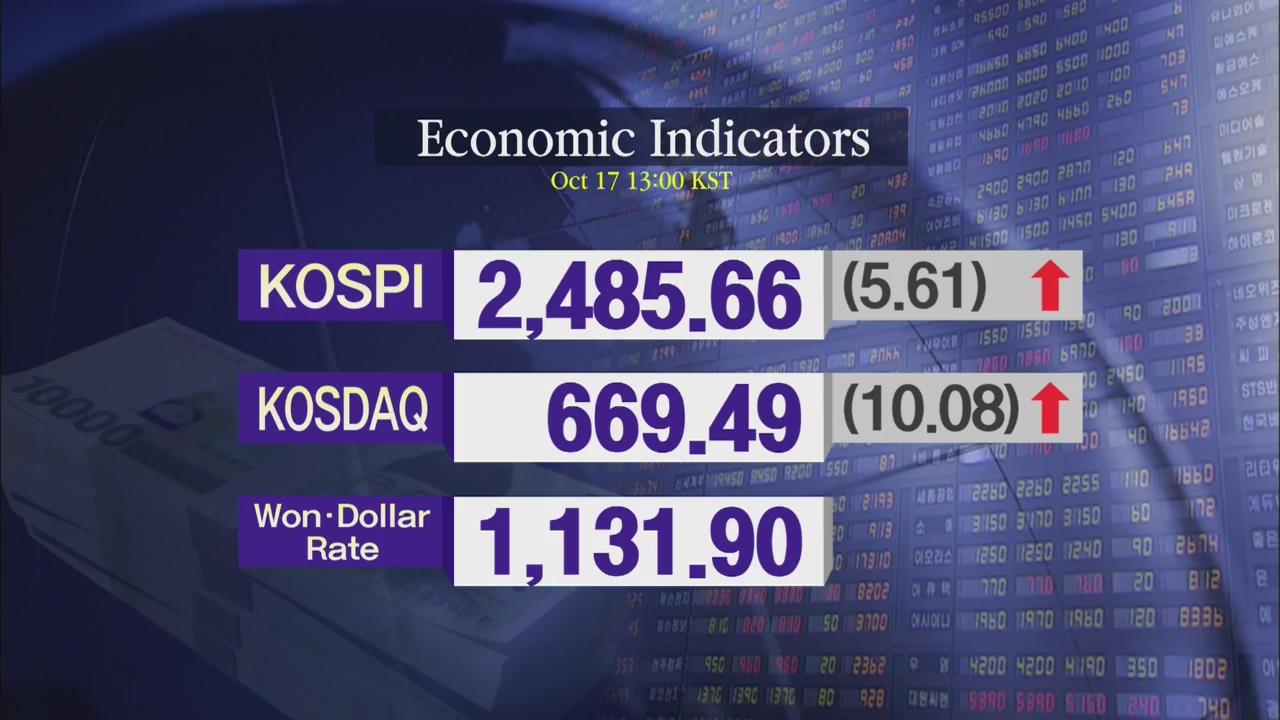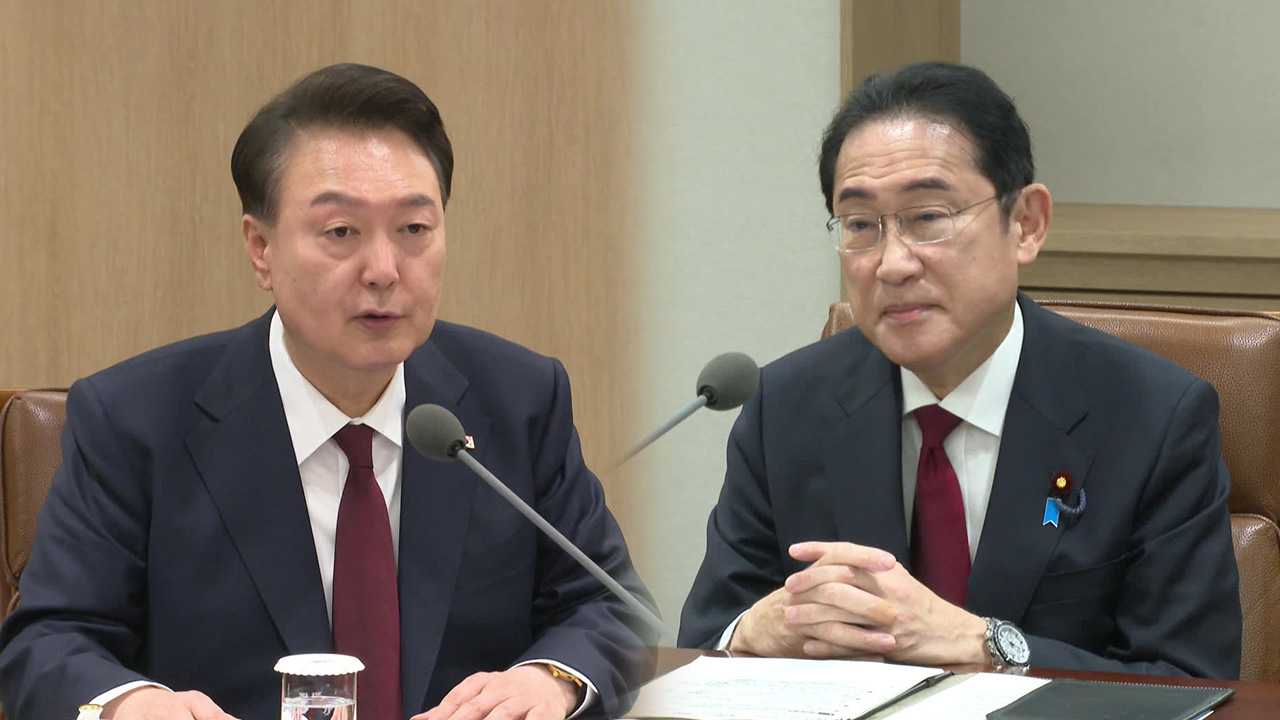Innovating Textiles
입력 2017.10.17 (14:15)
수정 2017.10.17 (14:21)
읽어주기 기능은 크롬기반의
브라우저에서만 사용하실 수 있습니다.
[Anchor Lead]
Sewing factories struggle to find skilled workers in the textile trade. Those who knew the industry best have gotten old. As a result, the apparel and fashion industry is incorporating information technology in innovative ways.
[Pkg]
Here is a clothing shop at a department store. A customer looks around and stands in front of a big mirror with some items he picked out. This is a virtual fitting program where customers can try on clothes in 3D.
[Soundbite] (Store Clerk) : "The fit and size are measured accurately without having to try it on. I think the navy blue is better."
A movement recognition sensor identifies the client's body shape and presents a virtual look of the person wearing the piece of clothing. Such new attempts at merging fashion and information technology are bringing a wave of change to existing methods of clothing production. Body measurements are taken through a 3D scan and the customer picks out the design. The fabric is produced on the spot, and with use of a high-tech automatic sewing system, the finished one-of-a-kind garment is ready in just about an hour.
[Soundbite] Byeon Woo-gyeong (Seoul Resident) : "This fits me well due to the body scan and precise measurements."
Products of this outdoor apparel brand have no stitch marks. Therefore they are most effective in blocking winds and keeping away water. This is because needles and threads are not used in the production process thanks to cutting edge, high frequency binding technology. A 3D design system has also been recently introduced, drastically cutting production time.
[Soundbite] Ji Eun-joo (Outdoor Apparel Manufacturer) : "It took about 72 hours to send over the samples and receive feedback. This is down to 30 minutes now as 3D technology allows work in real-time."
The fourth industrial revolution in fashion has already begun in various parts around the world. Clothes made by 3D printing are showcased at a New York fashion show...while in China, a growing number of young people order custom made clothes with their smartphones. The textile sector, once the engine behind Korea's economic growth, has begun another leap forward in the fourth industrial revolution of the modern era.
Sewing factories struggle to find skilled workers in the textile trade. Those who knew the industry best have gotten old. As a result, the apparel and fashion industry is incorporating information technology in innovative ways.
[Pkg]
Here is a clothing shop at a department store. A customer looks around and stands in front of a big mirror with some items he picked out. This is a virtual fitting program where customers can try on clothes in 3D.
[Soundbite] (Store Clerk) : "The fit and size are measured accurately without having to try it on. I think the navy blue is better."
A movement recognition sensor identifies the client's body shape and presents a virtual look of the person wearing the piece of clothing. Such new attempts at merging fashion and information technology are bringing a wave of change to existing methods of clothing production. Body measurements are taken through a 3D scan and the customer picks out the design. The fabric is produced on the spot, and with use of a high-tech automatic sewing system, the finished one-of-a-kind garment is ready in just about an hour.
[Soundbite] Byeon Woo-gyeong (Seoul Resident) : "This fits me well due to the body scan and precise measurements."
Products of this outdoor apparel brand have no stitch marks. Therefore they are most effective in blocking winds and keeping away water. This is because needles and threads are not used in the production process thanks to cutting edge, high frequency binding technology. A 3D design system has also been recently introduced, drastically cutting production time.
[Soundbite] Ji Eun-joo (Outdoor Apparel Manufacturer) : "It took about 72 hours to send over the samples and receive feedback. This is down to 30 minutes now as 3D technology allows work in real-time."
The fourth industrial revolution in fashion has already begun in various parts around the world. Clothes made by 3D printing are showcased at a New York fashion show...while in China, a growing number of young people order custom made clothes with their smartphones. The textile sector, once the engine behind Korea's economic growth, has begun another leap forward in the fourth industrial revolution of the modern era.
■ 제보하기
▷ 카카오톡 : 'KBS제보' 검색, 채널 추가
▷ 전화 : 02-781-1234, 4444
▷ 이메일 : kbs1234@kbs.co.kr
▷ 유튜브, 네이버, 카카오에서도 KBS뉴스를 구독해주세요!
- Innovating Textiles
-
- 입력 2017-10-17 14:06:14
- 수정2017-10-17 14:21:10

[Anchor Lead]
Sewing factories struggle to find skilled workers in the textile trade. Those who knew the industry best have gotten old. As a result, the apparel and fashion industry is incorporating information technology in innovative ways.
[Pkg]
Here is a clothing shop at a department store. A customer looks around and stands in front of a big mirror with some items he picked out. This is a virtual fitting program where customers can try on clothes in 3D.
[Soundbite] (Store Clerk) : "The fit and size are measured accurately without having to try it on. I think the navy blue is better."
A movement recognition sensor identifies the client's body shape and presents a virtual look of the person wearing the piece of clothing. Such new attempts at merging fashion and information technology are bringing a wave of change to existing methods of clothing production. Body measurements are taken through a 3D scan and the customer picks out the design. The fabric is produced on the spot, and with use of a high-tech automatic sewing system, the finished one-of-a-kind garment is ready in just about an hour.
[Soundbite] Byeon Woo-gyeong (Seoul Resident) : "This fits me well due to the body scan and precise measurements."
Products of this outdoor apparel brand have no stitch marks. Therefore they are most effective in blocking winds and keeping away water. This is because needles and threads are not used in the production process thanks to cutting edge, high frequency binding technology. A 3D design system has also been recently introduced, drastically cutting production time.
[Soundbite] Ji Eun-joo (Outdoor Apparel Manufacturer) : "It took about 72 hours to send over the samples and receive feedback. This is down to 30 minutes now as 3D technology allows work in real-time."
The fourth industrial revolution in fashion has already begun in various parts around the world. Clothes made by 3D printing are showcased at a New York fashion show...while in China, a growing number of young people order custom made clothes with their smartphones. The textile sector, once the engine behind Korea's economic growth, has begun another leap forward in the fourth industrial revolution of the modern era.
Sewing factories struggle to find skilled workers in the textile trade. Those who knew the industry best have gotten old. As a result, the apparel and fashion industry is incorporating information technology in innovative ways.
[Pkg]
Here is a clothing shop at a department store. A customer looks around and stands in front of a big mirror with some items he picked out. This is a virtual fitting program where customers can try on clothes in 3D.
[Soundbite] (Store Clerk) : "The fit and size are measured accurately without having to try it on. I think the navy blue is better."
A movement recognition sensor identifies the client's body shape and presents a virtual look of the person wearing the piece of clothing. Such new attempts at merging fashion and information technology are bringing a wave of change to existing methods of clothing production. Body measurements are taken through a 3D scan and the customer picks out the design. The fabric is produced on the spot, and with use of a high-tech automatic sewing system, the finished one-of-a-kind garment is ready in just about an hour.
[Soundbite] Byeon Woo-gyeong (Seoul Resident) : "This fits me well due to the body scan and precise measurements."
Products of this outdoor apparel brand have no stitch marks. Therefore they are most effective in blocking winds and keeping away water. This is because needles and threads are not used in the production process thanks to cutting edge, high frequency binding technology. A 3D design system has also been recently introduced, drastically cutting production time.
[Soundbite] Ji Eun-joo (Outdoor Apparel Manufacturer) : "It took about 72 hours to send over the samples and receive feedback. This is down to 30 minutes now as 3D technology allows work in real-time."
The fourth industrial revolution in fashion has already begun in various parts around the world. Clothes made by 3D printing are showcased at a New York fashion show...while in China, a growing number of young people order custom made clothes with their smartphones. The textile sector, once the engine behind Korea's economic growth, has begun another leap forward in the fourth industrial revolution of the modern era.
이 기사가 좋으셨다면
-
좋아요
0
-
응원해요
0
-
후속 원해요
0

















이 기사에 대한 의견을 남겨주세요.